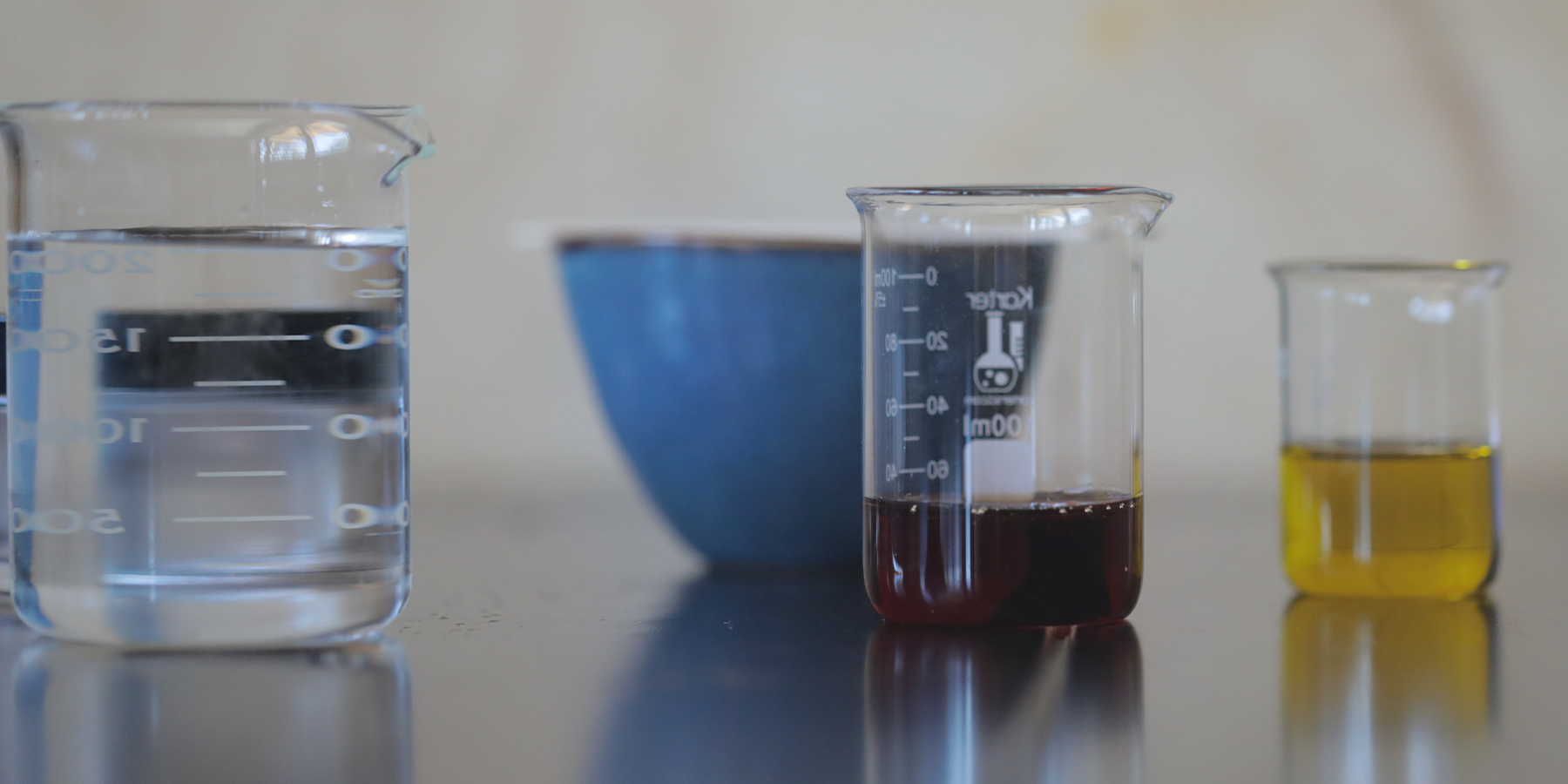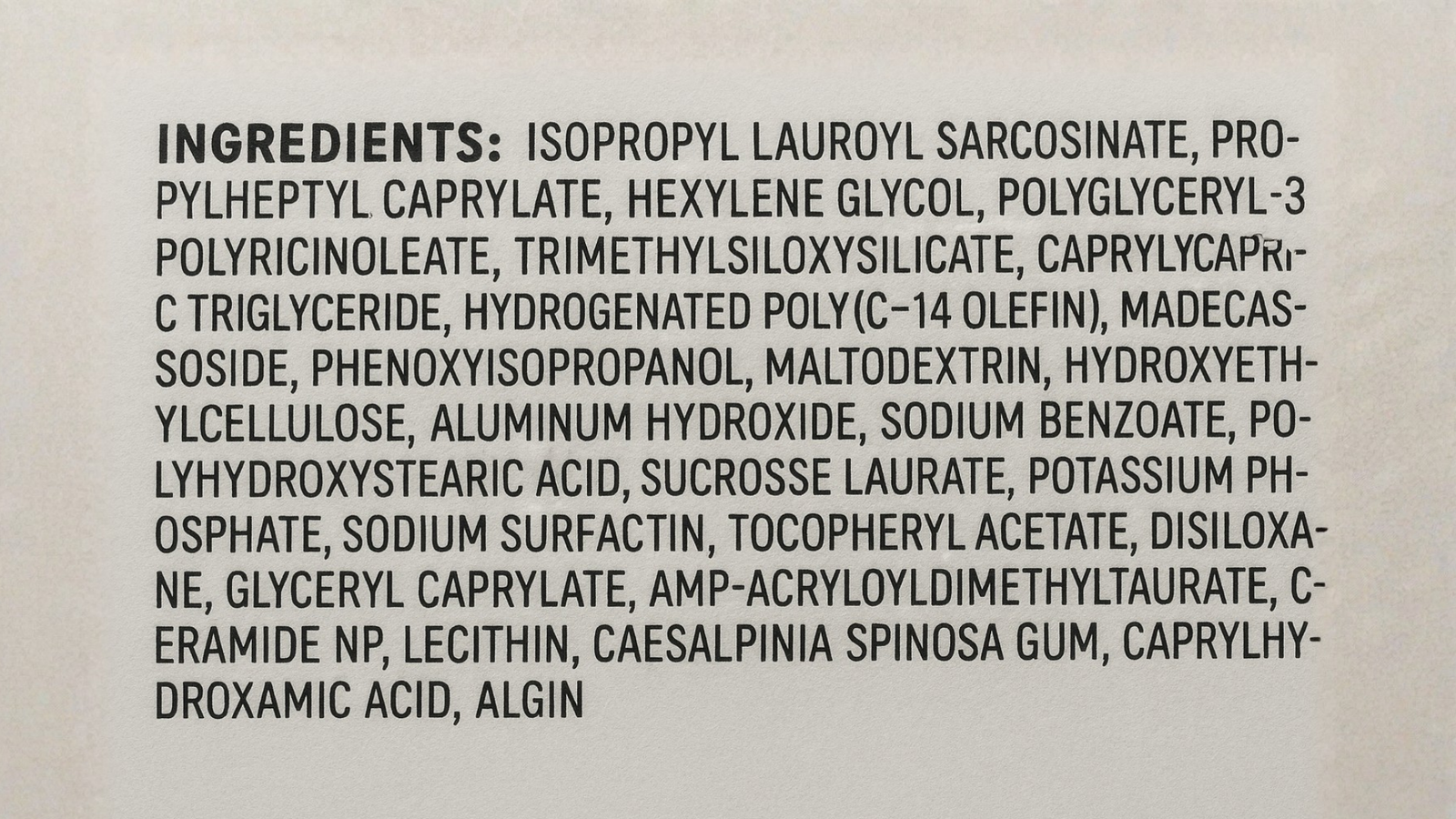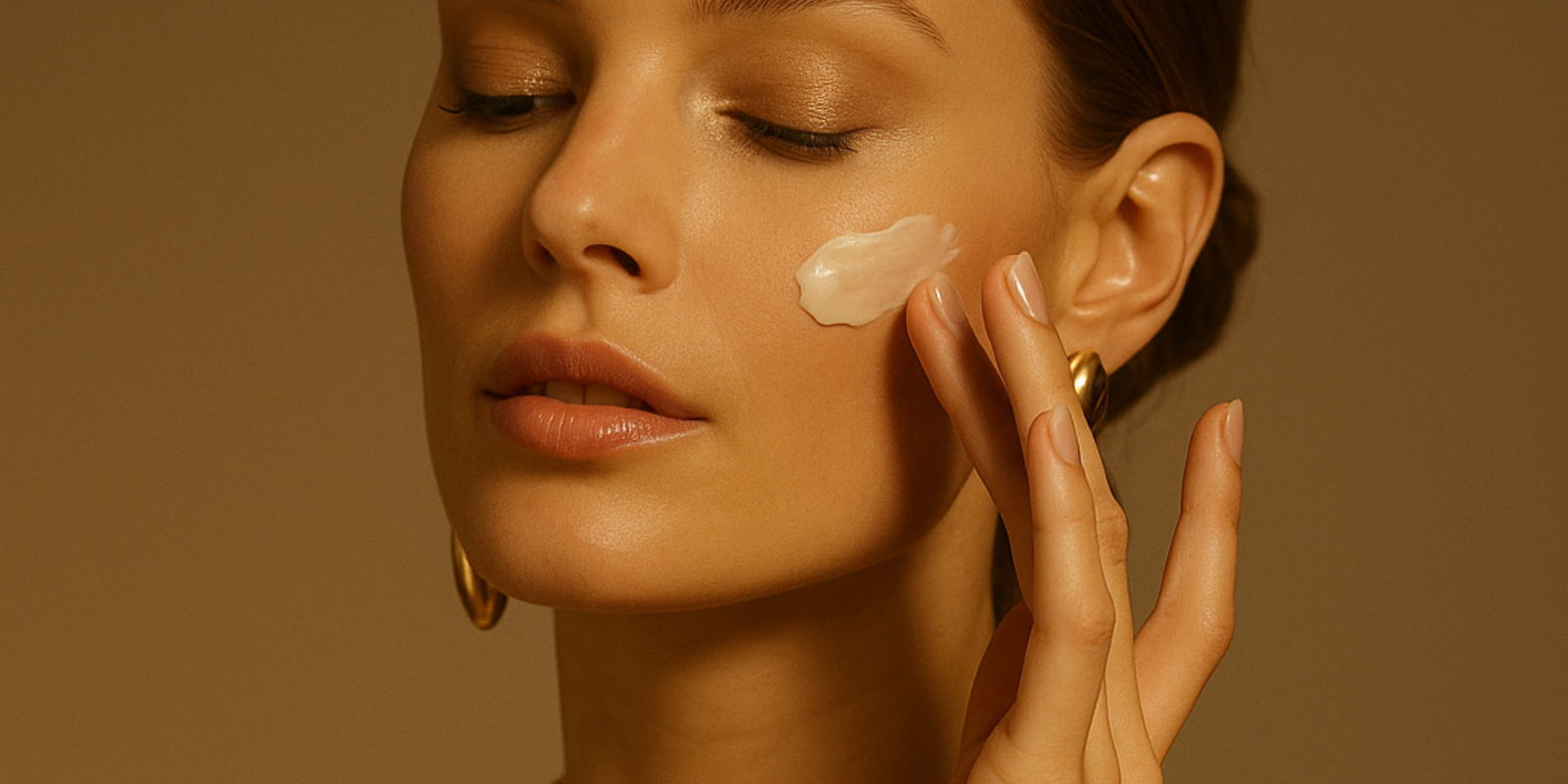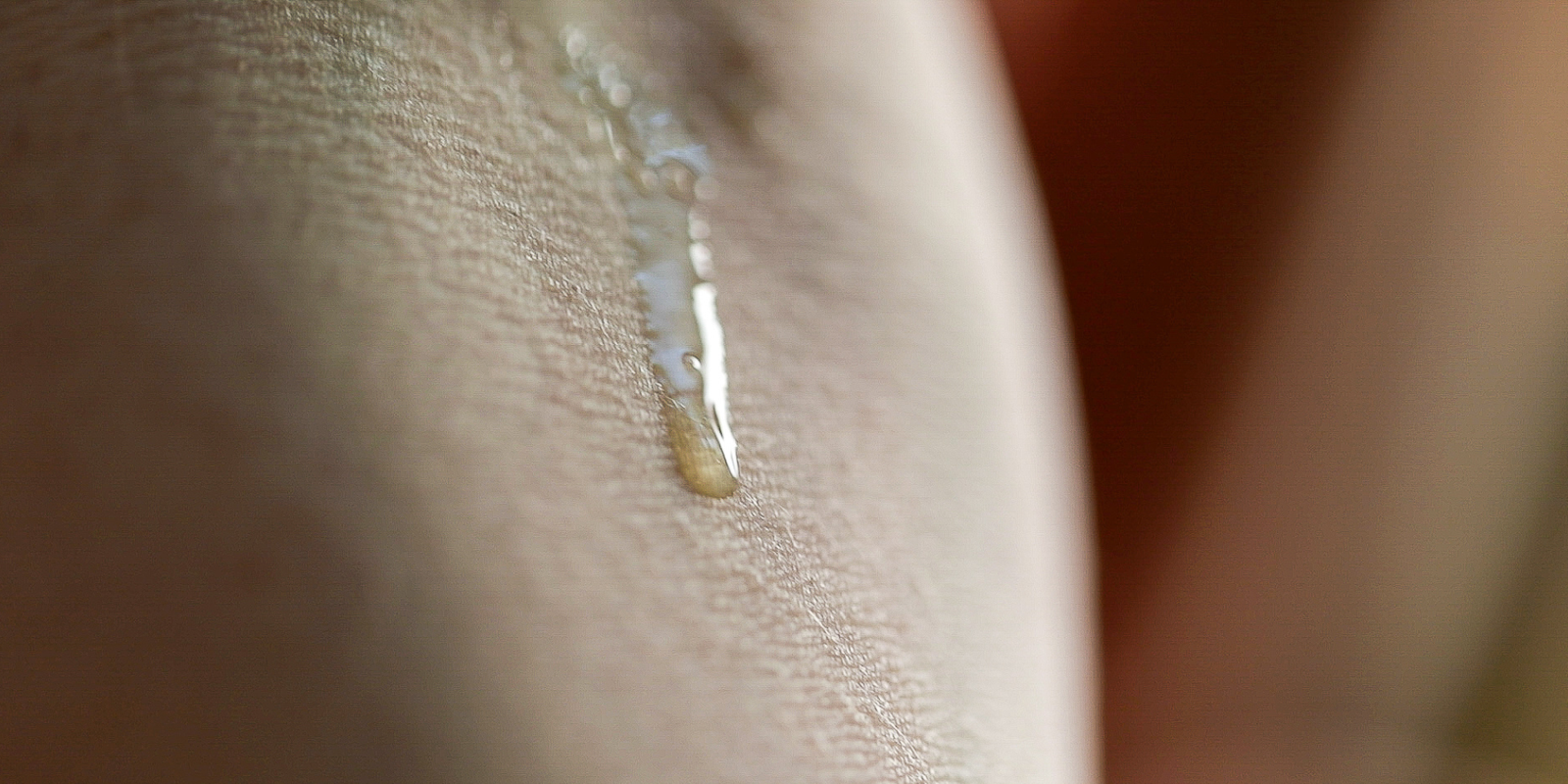EWG Verified & Leaping Bunny Certified | Free Gift $200+
EWG Verified & Leaping Bunny Certified | Free Gift $200+
Natural Skincare Ingredients vs Synthetic: Two Decades of Observation

Identifying the key differences between natural and synthetic ingredients so you can make the most informed decisions for the health of your skin.
Natural Skincare Ingredients vs Synthetic: Two Decades of Observation
Introduction.
In skincare, the debate between natural and synthetic ingredients has become one of the most talked-about topics, and one of the most misunderstood. Some people believe that lab-made ingredients are more advanced or effective, while others swear by the purity and safety of what comes from nature.
After over 20 years as a holistic esthetician, I’ve studied thousands of clients’ skin firsthand and the difference for me is undeniable. Natural ingredients, when used in their purest and most potent form, work better with your skin’s biology rather than against it. They deliver visible results while supporting long-term skin health.
In this post, I’ll break down the real difference between natural and synthetic ingredients, share why nature’s formulas are often just as (if not more) effective than their lab-made counterparts, and highlight the botanicals I personally use in our Flora Mirabilis products to achieve those results.
What is a natural ingredients in skincare?
Natural ingredients come directly from the earth from flowers, herbs, seeds, nuts, fruits, and clays.
They are often used in their raw form or obtained through minimal processing. Processes can be physical pressing (to extract oils), drying, or distillation (commonly used for essential oils). The aim is to keep the chemical structure of the natural compounds largely intact; natural ingredients contain many different chemical compounds, each often containing hundreds.
From my perspective as an esthetician, that harmony is key. Your skin recognizes and responds to natural compounds because they’re biologically familiar, the same way your body processes whole foods better than processed ones. When we use ingredients that are unrefined and true to their natural form, we support the skin’s natural repair and protection functions rather than trying to change it.
That’s why, in every Flora Mirabilis formula, I choose natural ingredients that are cold-pressed, steam-distilled, or clay-mined and never solvent-extracted or refined to the point of losing their integrity.
What is a synthetic ingredient?
Synthetic ingredients are compounds created in a laboratory rather than extracted directly from nature. They’re typically made by combining or altering raw materials and often petrochemicals or botanically derived base chemicals to produce a specific, isolated compound.
While many synthetic ingredients are designed to mimic natural ones, they lack the full spectrum of nutrients and antioxidants that come from the whole plant. For example, a lab might isolate one active compound believed to provide hydration or brightening, but in doing so, it loses the synergistic effects of the dozens of supporting compounds found in the natural source.
Commonly used chemicals include hydrochloric acid, sodium hydroxide (lye), sulfuric acid, and ethanol. Synthetic ingredients can also be produced by engineering microorganisms such as bacteria and yeasts to produce certain chemicals.
This doesn’t mean all synthetic ingredients are harmful. Some are safe and can perform well. But I’ve found through years of hands-on experience that isolated compounds often give short-term results at the expense of long-term skin balance. When skin is fed with complete, living ingredients, it thrives, not just visually improved while using the products.
It is worth noting that many of the synthetic ingredients produced are replicas of compounds found in natural ingredients!
What is the main difference between the two?
Besides the obvious, which is that natural ingredients are directly sourced from nature while synthetic ingredients are lab-made, the major difference is that a natural ingredient contains hundreds of chemical compounds, whereas a synthetic ingredient typically contains a single isolated compound.
One could argue that it is preferable to use a single isolated compound if it is proven to do x,y, and z for your skin. However, the compounds that a plant produces work in synergy, which means that the cumulative effect is greater than that of just a single isolated compound.

The pros and cons of natural and synthetic ingredients.
Natural Ingredient Pros:
- Natural nourishment and protection. The chemical compounds in a natural ingredient are created by the botanical source to provide growth, nourishment, and protection. For example, flavonoids are a diverse group of plant chemicals that filter UV rays and protect the plant from environmental stresses, including UV radiation. These chemicals offer similar protective properties when applied topically to your skin.
- Purity. Most natural ingredients are obtained by pressing and steam distillation and do not use potentially skin-irritating chemicals to extract them. (Be cautious of natural ingredients that are extracted with the use of solvents, such as absolutes—which are essentially essential oils extracted with chemical solvents.)
- Biological connection. I believe that we, as biological beings, interact best with ingredients sourced directly from the earth. The plants used to produce natural ingredients have been growing and developing alongside us for hundreds and often thousands of years. Our ancestors used these same ingredients for skincare and beauty.
Natural Ingredient Cons:
- Shelf life. Depending on the ingredients, the shelf life of a product made from natural ingredients may not be as long as that of conventional synthetic products, which use preservatives.
- Sustainability. Sustainability is a key factor in responsible growing practices for any harvested crop. It’s important to ensure that the ingredients used in a natural skincare product are sustainable. There are some natural ingredients, such as Rosewood, which are susceptible to overharvesting and therefore not considered sustainable.
Synthetic Ingredient Pros:
- Consistency. Scientists can ensure the consistency of compounds on a large scale by producing ingredients in a laboratory under precise conditions.
- Stability. Many synthetic ingredients are more shelf-stable than their natural counterparts. They can often better withstand higher temperatures and exposure to light and air.
- Cost-effective. Synthetic ingredients generally cost less to produce than extracting natural ingredients. This lower cost allows synthetic products to be priced lower than natural ones. However, expensive synthetic products are generally priced higher because of research and development costs, patent protection costs, and, unfortunately, sometimes marketing strategy.
Synthetic Ingredient Cons:
- Lack of synergy. As I mentioned, synthetic ingredients typically isolate a specific compound, unlike natural ingredients, which can contain a complex mixture of beneficial compounds that often work synergistically. This isolation can mean missing out on the potential cumulative benefits found in the natural source.
- Biodegradability. Many synthetic ingredients are not biodegradable, meaning they do not break down easily in the environment. This can lead to an accumulation in the earth’s ecosystems and environmental damage.
- Ethical concerns. The development and testing of synthetic ingredients often involve practices that raise ethical concerns, such as animal testing. Although alternative testing methods are being developed, the use of animals in chemical safety testing is still prevalent.
- Potential health risks. Some synthetic ingredients have been linked to health risks. For example, certain synthetic preservatives, fragrances, and additives are associated with allergic reactions, skin irritation, or more severe health issues such as endocrine disruption. The long-term health effects of many synthetic chemicals are still being studied.
Why I believe in using natural ingredients for healthy skin.
Based on all the evidence I have researched and, most importantly, the actual results I witnessed firsthand on thousands of facial clients, I truly believe that using products made from natural ingredients is the best way to keep your skin healthy. In the same way, avoiding ultra-processed foods and instead consuming whole foods (minimally processed and as close to their natural state as possible) is generally considered healthiest for your body.
While some synthetic ingredients have been deemed safe for your skin, the vast majority of synthetic ingredients contain a cocktail of many different ingredients and preservatives. There have been enough studies done on some of the most commonly used synthetic ingredients proving them to be harmful to your skin, in particular, propylene glycol, parabens, artificial fragrance and dyes, and sodium laurel sulfate, for me to swear off the use of them personally and in my facials.
The natural ingredients and compounds in Flora Mirabilis products.
When I choose ingredients for our Flora Mirabilis products, I make sure to choose only natural ingredients that are minimally processed, unrefined, and as close to their natural form as possible. I only source these natural ingredients from farms that practice sustainable and organic farming. I also make sure to choose ingredients rich in compounds that work synergistically and are proven to improve the health and appearance of your skin.
Sacha Inchi Oil
- Linoleic acid, and alpha-linolenic acid. These fatty acids work in synergy to increase skin elasticity and restore its barrier function and natural oil production.
- Alpha-tocopherol and Gamma-tocopherol. Alpha is the most biologically active form of vitamin E, which protects from oxidative damage, and Gamma has distinct antioxidant properties that complement its effects.
- Ferulic acid. A phenolic acid that has antioxidant and UV protective effects.
- Quercetin. A flavonoid that neutralizes free radicals and provides anti-inflammatory effects.
Apricot Kernel Oil
- Oleic acid. A fatty acid known for its moisturizing and skin-softening effects.
- Vitamin A. Important for healthy skin cell production and improves skin’s texture and resilience.
- Beta-sitosterol, campesterol, and stigmasterol. These phytosterols work together to repair your skin’s barrier, maintain hydration, and offer anti-inflammatory properties.
Pomegranate Seed Oil
- Punicic acid. Also known as omega-5, this incredibly potent fatty acid has regenerative, anti-inflammatory, and antioxidant properties.
- Quercetin and anthocyanins. These flavonoids enhance the oil's antioxidant properties.
- Ellagic and Gallic acids. These phenolic compounds work together to mitigate skin damage from UV radiation and support skin repair.
Safflower Oil
- Linoleic acid. Essential for maintaining the integrity of cell membranes and is beneficial for skin health.
- Alpha-tocopherol and Gamma-tocopherol. Alpha is the most biologically active form of vitamin E, which protects from oxidative damage, and Gamma has distinct antioxidant properties that complement its effects.
- Beta-sitosterol, campesterol, and stigmasterol. These phytosterols work together to repair your skin’s barrier, maintain hydration, and offer anti-inflammatory properties.
Meadowfoam Oil
- Eicosenoic and Erucic fatty acids. These fatty acids create a protective layer on your skin to lock in moisture and keep your skin soft and supple.
- Brassicasterol and campesterol. These sterols improve barrier function and have potent anti-inflammatory properties.
- Squalene. This natural antioxidant helps moisturize the skin and reduce signs of aging.
Castor Oil
- Ricinoleic acid. This is the dominant fatty acid in Castor oil and is rare in the plant kingdom. It is known for its anti-inflammatory and antimicrobial properties, making it an excellent choice for acne and skin irritation.
- Alpha-tocopherol and Gamma-tocopherol. Alpha is the most biologically active form of vitamin E, which protects from oxidative damage, and Gamma has distinct antioxidant properties that complement its effects.
Vanilla
- Vanillin. The primary component in Vanilla that protects your skin from sun damage and neutralizes free radical damage.
- Vanillic acid. Reduces redness and irritation and soothes your skin.
- Eugenol. Known for its anti-inflammatory and antiseptic properties, eugenol can help calm skin inflammation and fight bacteria that can lead to acne.
- P-hydroxybenzoic acid: This compound has some antimicrobial properties, which can help prevent the growth of bacteria on the skin. It also acts as an antioxidant.
Saffron
- Crocin and crocetin. These carotenoids contribute to Saffron’s powerful antioxidant properties. They reduce redness and inflammation and help improve your skin texture by promoting hydration and elasticity.
- Safranal. Possesses potent antioxidants and improves the brightness and radiance of your skin.
- Kaempferol. This flavonoid has anti-inflammatory and antioxidant effects. It supports skin health by protecting against oxidative stress and can also help reduce the signs of aging.
Kaolin Clay
- Kaolinite. This layered mineral absorbs excess oil from the skin and provides a cleansing effect without stripping your skin of its natural oils.
- Quartz and feldspar. These minerals have a very gentle abrasive quality, contributing to their skin-smoothing effect.
- Illite. This mineral is known for its ability to draw impurities from the skin and improve skin clarity.
Apple Cider Vinegar
- Malic acid. An alpha hydroxy acid that improves your skin texture and clarity.
- Ascorbic acid. Also known as vitamin C, it offers a ton of skin benefits, including antioxidant protection, skin brightening, stimulation of collagen synthesis, and UV protection.
- Epicatechin and epigallocatechin. These compounds, also found in green tea, have a potent antioxidant effect that protects from free radical damage.
Sandalwood Oil
- Alpha and beta Santalol. These are the primary compounds in Sandalwood oil, and play a huge role in its anti-inflammatory properties. They soothe skin irritation, particularly eczema, acne, and psoriasis and have a calming effect on your skin.
- Alpha Bisabolol. Known for its skin-healing properties, this compound penetrates to your skin’s deepest layers to deliver healing and soothing effects. Effective for dry skin and restoring barrier function.
- Alpha and beta Santalene. These sesquiterpenes have powerful antimicrobial properties. They help protect the skin from bacterial and fungal infections, making Sandalwood a useful ingredient in formulations aimed at treating acne and other skin infections.
Frankincense Oil
- Boswellic acid. This is the most notable compound in Frankincense oil, with powerful anti-inflammatory properties. It reduces the appearance of redness and irritation in the skin. It also has been studied for its ability to prevent the breakdown of collagen in the skin and promote skin elasticity.
- Alpha-pinene. This terpene, known for its antimicrobial and anti-inflammatory properties, can help reduce swelling and kill bacteria contributing to acne and other skin infections.
- Limonene. Another terpene with strong antioxidant properties. It has a natural astringent effect, which improves your skin’s overall tone.
Lavender Oil
- Linalool. This is one of the primary components and serves as a natural antiseptic and anti-inflammatory agent. It soothes and calms skin, reduces redness and irritation, and has pain-relieving properties which helps with conditions like eczema or sunburns.
- Linalyl acetate. This ester has similar properties to linalool. It can help heal cuts, burns, and other skin irritations.
- Terpinen-4-ol. This is another component with significant antibacterial properties, particularly effective against acne-causing bacteria. It helps cleanse the pores and reduce outbreaks.
Vetiver Oil
- Vetiverol. Can help protect the skin from environmental stressors and reduce signs of aging by minimizing inflammation and neutralizing free radicals.
- Khusimol. It is effective in promoting the healing of skin tissue, making it beneficial for scars, acne marks, and other skin imperfections.
- Isovalencenol. This compound has soothing effects and helps to enhance the appearance of dry or damaged skin, restoring suppleness and moisture balance.
Cedarwood Oil
- Cedrol. Cedrol has significant anti-inflammatory properties, making it beneficial for reducing irritation and redness associated with various skin conditions.
- Alpha and beta-cedrene. These sesquiterpenes have mild astringent and antiseptic properties, which can help regulate skin oil production and reduce the occurrence of acne.
- Thujopsene. This sesquiterpene also contributes to cedarwood oil’s distinctive smell and offers additional antiseptic and astringent properties. It helps tighten the skin, minimize pores, and improve skin tone.
Valerian Oil
- Valerenic acid. The most notable component in Valerian oil. It has anti-inflammatory properties, which reduce redness and soothe skin irritations. It is also beneficial for stress-related skin problems, such as acne exacerbated by stress.
- Valerenal and Valeranone. These sesquiterpenes provide mild antibacterial effects. This can be beneficial in preventing and treating minor skin infections and improving the overall health and appearance of the skin.
- Isovaleric acid. Offers antifungal properties, which can be useful in treating fungal skin conditions. It also helps to soothe the skin, reducing irritation and discomfort.
Rose Oil
- Citronellol. The key component in Rose oil, known for its antimicrobial and anti-inflammatory properties. Citronellol helps to soothe the skin and reduce redness and inflammation.
- Nerol. This compound adds to the oil's soothing effects and helps hydrate the skin. It also has antiseptic and antimicrobial properties, which help keep the skin clear and healthy.
- Farnesol. Known for its antibacterial properties, particularly against bacteria that can cause acne. It also helps balance the skin's natural oils, making it useful for both dry and oily skin types.
Oud
- Agarol. This sesquiterpene is one of the primary active components in Oud. Its anti-inflammatory properties can help reduce skin inflammation and irritation, making it beneficial for conditions like eczema or dermatitis.
- Aquilarin. An antioxidant compound that helps protect the skin from oxidative stress caused by environmental aggressors like pollution and UV radiation.
- Jinkoh-eremol. This sesquiterpene has soothing properties and may also improve the skin's overall texture and appearance by promoting hydration and elasticity.
Conclusion.
In conclusion, when it comes to using natural vs. synthetic ingredients in skincare, I wholeheartedly believe in the safety and efficacy of natural ingredients. If you are looking at a synthetic product, avoid those containing potentially harmful ingredients to your skin, such as propylene glycol, parabens, artificial fragrances and dyes, and sodium laurel sulfate.
If you are choosing a natural product, take some time to research the ingredients and make sure the compounds they contain are what you want your skincare product to do for your skin. Either way, the more informed you are about ingredients, the better equipped you are to make the best decisions for your skin's health.
If you are looking for products already formulated with this in mind, checkout our Fountain of Youth Cleansing Clay and Holy Grail Face Oil as an option for an organic 2-step skincare routine.
Resources.
https://www.ncbi.nlm.nih.gov/pmc/articles/PMC10607442/
https://www.ncbi.nlm.nih.gov/pmc/articles/PMC7660047/
https://www.ncbi.nlm.nih.gov/pmc/articles/PMC8542186/
https://pubmed.ncbi.nlm.nih.gov/31292346/
https://www.ncbi.nlm.nih.gov/pmc/articles/PMC9501365/
https://pubmed.ncbi.nlm.nih.gov/27451200/
https://www.ncbi.nlm.nih.gov/pmc/articles/PMC5962701/
https://www.ncbi.nlm.nih.gov/pmc/articles/PMC5015816/
https://www.ncbi.nlm.nih.gov/pmc/articles/PMC7790484/
https://pubmed.ncbi.nlm.nih.gov/35276955/
https://pubmed.ncbi.nlm.nih.gov/28943206/
https://pubmed.ncbi.nlm.nih.gov/34350993/
https://pubmed.ncbi.nlm.nih.gov/29344319/
https://pubmed.ncbi.nlm.nih.gov/27117114/
https://pubmed.ncbi.nlm.nih.gov/12112282/
https://www.ncbi.nlm.nih.gov/pmc/articles/PMC3586833/
https://www.ncbi.nlm.nih.gov/pmc/articles/PMC9104417/
https://www.ncbi.nlm.nih.gov/pmc/articles/PMC5590077/
Also in Apotheca Edit

The Hidden Cost of Fillers: You’re Paying for Ingredients That Irritate Your Skin
Many skincare products rely on “filler” ingredients—fragrance, dyes, and texture agents that offer no real skin benefit and may contribute to irritation. Learn how to spot them and choose formulas built only with active, purposeful ingredients.

The Dangers of Designer Skincare
The price tag of luxury skincare doesn’t mean rare ingredients and better results. Many designer formulas prioritize packaging gimmicks and prestige over true skin health—often using silicones, synthetics, and preservatives that quietly damage your skin barrier. Learn about label transparency and why “premium” isn’t always better to reveal what skin nourishment really looks like.

The Top 10 Best (And Worst) Oils to Use On Your Face
I get asked all the time about using oils like avocado, olive, and coconut on the face—and the truth may surprise you. Not every “natural” oil is good for your skin. In this post, I break down the best and worst oils to use, what their comedogenic ratings really mean, and how to choose the ones that will actually nourish your skin instead of clogging it.
Subscribe
Sign up to get the latest on sales, new releases and more …
Reviews
See why 1000's have simplified their skincare with Flora Mirabilis.


